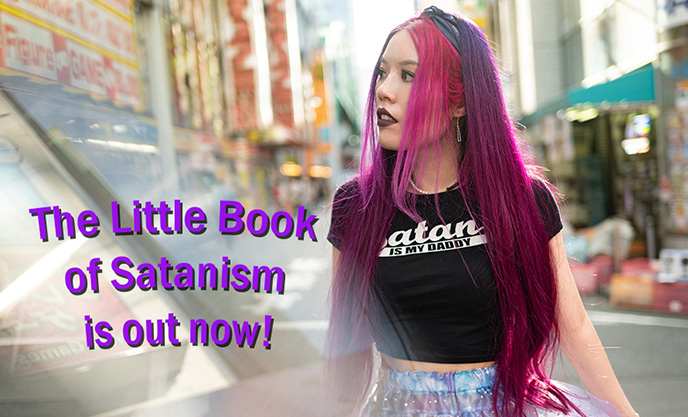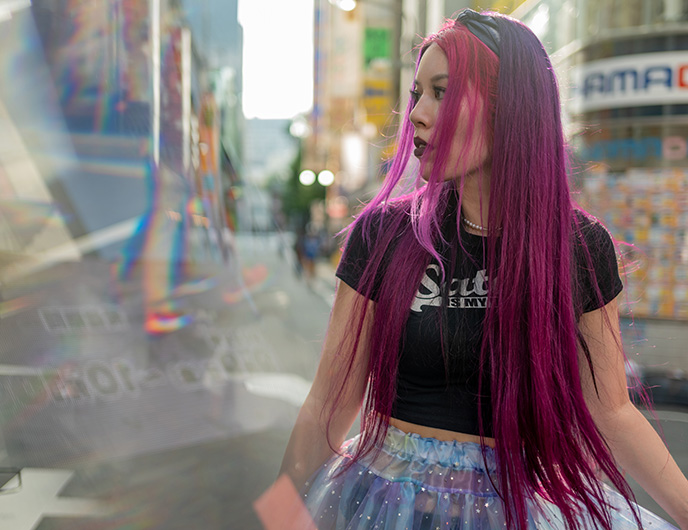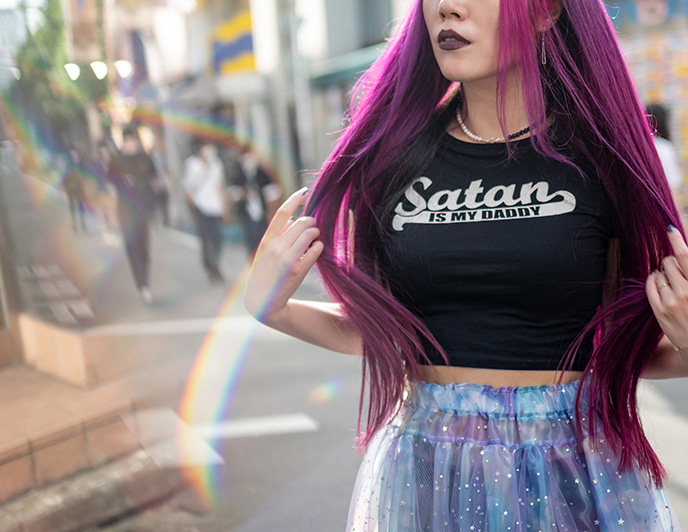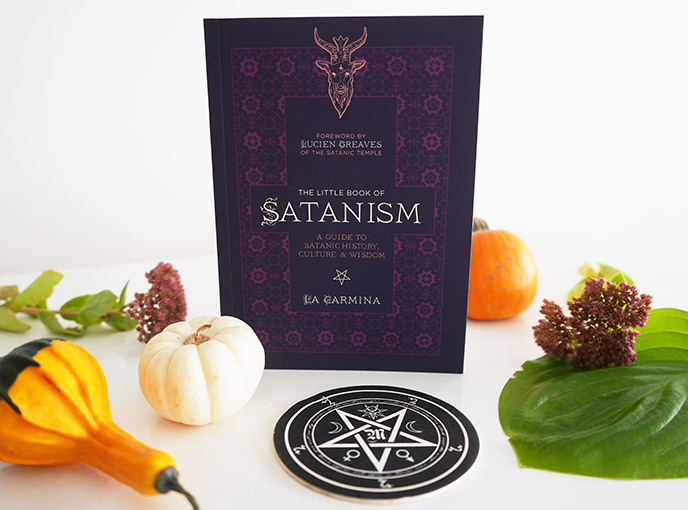Search Results for: satan
Satanic Goth Osaka, Japan! Buddhist Hell Temple Senko-ji, Demon shrine, Satanist Gothic metal Bar Midian, Farplane.

I think you can tell I had a hell of a time in Osaka, Japan! Around Halloween, I explored the most Satanic haunts in the city — including this demonic Namba shrine, Senko-ji Buddhist hell temple (there’s a video about my visit here...)

and devilish Rock Bar Midian — a joy to reunite with owner Fu-Ki after many years! Read on for my in-depth Goth Satanic Japanese guide to Osaka.

Let’s begin our journey through the underworld at Senko-ji hell temple, located on the outskirts of Osaka! I wrote about Asia’s bizarre hell parks and temples for National Geographic — in a nutshell, these are themed around gruesome-meets-kitschy depictions of Hell, as described in Buddhist mythology. Visitors to Buddhist hell temples like Senko-ji get to preview what it is like to suffer in the lowest realm of samsaric existence.
I descended into this temple of doom with Per Faxneld, one of the world’s leading Satanic scholars (he’s a Swedish professor/researcher/lecturer, and author of books including ”Satanic Feminism”). Check out our journey in this Insta reel as well.

Although Buddhist Hell isn’t connected to the Biblical Devil, there are a lot of visual and narrative parallels. If you accumulate bad karma in this lifetime, you can expect to be tortured by red-faced, horned demons in the Buddhist version of hell, which look a lot like Satan.

How to visit Senko-Ji Hell Temple: from central Osaka, it’s about 40 minutes by train to Hirano Ward. This historic outskirt of the city seemed to be populated entirely by older folk, which inadvertently gave the area a horror movie vibe!
Address of the Osakan hell temple: 4 Chome-12-21 Hirano Honmachi, Hirano Ward. We entered through this gate found inside the decrepit Hirano Honmachi shopping arcade.

You can visit other Buddhist hell temples throughout Japan, such as the hell museum at Izu Gokurakuen, and the hell cave at Kōsanji Temple in Kyoto. Generally, they’re filled with dioramas, statues, art, and interactive exhibits that communicate teachings of Buddhist hell — and give you a glimpse of the fiery fate awaiting sinners.
Many of these attractions are on the cheesy side — like these cutaway boards that let you pretend to be Enma or Yama, judge of the afterlife and king of hell! If you’re more of a “goody two shoes,” you can put your finger into the red thread “love knot” that binds you to the enlightened Buddharupa.

Senko-ji temple is part of the Kōyasan Shingon sect, and dates back to the Edo period (1603–1867). The popular hell hall was added in 1989. The monks and volunteers that run the temple are good-natured about the hellish elements — the head monk said my Satanic horns were “kawaii!” We bought a 100 yen ticket, which gave us entry to the Hall of Hell.

We were intrigued by this push button gizmo that predicts whether you’ll end up in Buddhist hell. Answer questions such as “do you waste time and money” to see where you’ll be reborn in your next life!
To enter into the inferno, we had to scan the QR code on our ticket. Ominous doors slid open…

… revealing this rather Satanic scene! That’s Enma or Yama, ruler of Hell, with the”king” kanji stamped on his hat. Stand before him for your judgement and punishment.

We struck the gong in front of Enma — and it activated smoke, red lights, eerie music, and a glitchy video, much like in a haunted house.
Crouched next to the fanged red demon is Datsue-ba. As Per Faxneld wrote, she’s “an old woman who’s said to sit by the Sanzu River in the Buddhist underworld, torturing souls as they attempt to cross the river. Datsue-ba is believed to make adult souls strip off their clothes, and if they have no clothes, she strips them of their skin instead.”

At Buddhist hell temples and parks, the statues are are cartoonish yet graphic: you might see people getting their limbs lopped off and intestines pulled out. In Asia’s version of hell, there’s always a giant wok filled with victims screaming as they are boiled alive in peanut oil — see above!

We watched a 10-15 minute video that expresses the terrors of hell, especially the creative punishments awaiting those reborn into the lowest Buddhist realm of existence. At the same time, leave it to Japan to add some cuteness to the experience… The exit sign looks like a round, kawaii demon.

Outside, you can also stick your head into this rock to hear the sounds of sinners screaming in “Hell’s Cauldron”. (Watch my reel on @LaCarmina Instagram about my Senko-ji visit, to see what it was like!)

Ironically, the realm of the gods is located underground at Osaka’s Senko-ji. We descended the stairs into a cave lit up with a giant LED rainbow mandala surrounded by Buddha statues. Take off your shoes, sit cross-legged and feel the power of chi.

Senjo-ji also has this koi pond with a fierce statue of Ippon Fudoson (Fudō Myōō, the wrathful destroyer of evil). The watery mist at his feet add a theatrical element to the hand-washing ablutions.

I wore my devil horns and Satanic Bar Midian t-shirt to the temple. Senko-ji isn’t a popular tourist attraction, so there were only a few other Japanese visitors on the grounds.
If you’re curious about the evolution of Asian hell gardens (first built next to Buddhist monasteries to communicate concepts of hell) and how they evolved into massive, kitschy theme parks, check out my article in National Geographic.

The “heavenly” section has peaceful Buddha statues wrapped in red cloaks… but there’s a demon lurking in the shadows!

If you’re intrigued by the Satanic side of Osaka, come to the Jigokudo or “hall of hell” of Senko-ji! I’d love to return to see the monks perform a fire ritual.

As Per Faxneld put it, “It’s well worth the trip, offering a fascinating glimpse into the multifaceted ways that Buddhist groups may attempt to offer lessons in morality.” Watch our Instagram reel of SenkoJi to see video footage of this fascinating hell temple!

Speaking of Japanese Satanists… I rode the train with No-Face (from the Spirited Away anime film) at Parco! This photo spot is located at Donguri Kyowakoku (Studio Ghibli Store) on the 6th floor of the Shinsaibashi department store. There’s also a photo area with Totoro holding an umbrella.

Per Faxneld and I fit right in with this naughty spirit. (If you haven’t seen the Spirited Away movie, it’s a must.)

If you need more proof that Osaka is Satan-friendly… Here’s the devilish Namba Yasaka Jinja! The 1975 design of the Shinto shrine is retrofuturistic fierceness.

Although the shrine looks like Lucifer’s maw, Namba Yasaka actually represents a roaring lion. You can purchase themed special ema, or small wooden plaques, and write your wishes and intentions on the back.

Rowrrr! I’m wearing an “ANOEL” faux fur shrug that I got at Laforet Harajuku because… well, how could I not.

Osaka’s famous lion looks a bit like a dragon or demon. Legend has it that the fanged guardian deity swallows evil spirits (somehow, Per and I survived).

I got to encounter more majestic lions at The Royal Park Canvas Osaka Kitahama, where I stayed. The hip, boutique hotel seemed designed for me: the lounge played disco music, and guests can pick up free moisturizing face masks and hair elastics, as well as enjoy a free drink for each night’s stay.

After a long day of exploring, I was glad to unwind in my spacious room with lion pillows and a deep bathtub. The Royal Park Canvas Osaka Kitahama strikes the perfect balance for travelers — you get a cosy and artful experience at a great price.

The hotel is in a quiet but central location in Osaka, right by a subway station and next to a convenience store. And be sure to enjoy the breakfast spread, which included eggs, curry, and miso soup. Cheers to The Royal Park Canvas Osaka Kitahama for a marvelous time. #pr

Time to throw the devil horns at Rock Bar Midian in Osaka, a favorite watering hole for Japan’s Satanists and heavy metal headbangers! I was pleased to reunite with Visual Kei rock star Fu-ki, the former vocalist of Blood.

As you can tell from the black-red color scheme and devilish decor, Midian is our type of bar. We listened to heavy metal (and watched music videos on the TV) next to Dracula wine bottles and Baphomet statues. Anyone can request a hard rock or metal song, and Fu-Ki will cue it up – and maybe belt along to it the music!

Midian has a wide range of cocktails with Satanic names — I adore the Diablo, a black currant liqueur, lime and ginger beer mix.

Bar Midian also pays homage to Taiki-san, the wizard of Osaka’s Satanic Shop Territory and overlord of Gothic club Black Veil. Taiki sadly passed in 2022, but the subculture that he cultivated has continued on. While his shop Territory is temporarily closed, it will re-open and people can purchase occult / bizarre / dark talismans from the website. Taiki’s Black Veil parties also live on — there was recently a Halloween edition.

Once again, even in an ominous Satanic space, we get some cuteness mixed in. (Funny story — I learned that several of the tattooed Gothic customers were hardcore fans of Miffy the cute bunny, like me!)

Rock on, Fu-Ki, for welcoming us back to Bar Midian. He speaks English, so I hope you’ll come to sit at his counter and bond over heavy metal!

Order a Satan or Devil’s Beer, and enjoy the rock metal gothic vibe at Midian. It can be a little hard to find, so look for the sign on the left, and head up to the 2nd floor. (Address: 10-16 Doyamacho, Kita-Ku Kano Dai-1 Leisure Bldg. 2F, Osaka)

One more alternative bar before we go…. This is the fabulous Farplane. I went to the new location in Shinsaibashi Parco, but there’s also one in Amemura.

Farplane puts you in a fetish cyber psychedelic space-age universe, with upbeat dance music to match.

The bar is an extension of Farplane Night, a long-running Osaka party that draws in an alien-cyber-alt crowd. (Think colorful hair and latex dresses).

Farplane started as a small alternative boutique in 2005. Although their universe has expanded, it says true to its cheeky-sexy roots.

The Farplane Parco bar (located in the basement) encourages you to get your freak on.

If you’re in Osaka for Farplane Night, it’s a must — an enormous fetish party that might involve burlesque, pole dancers, eccentric performances, and S&M.

I tried the eyeball apple cocktails, to fit with the neon pop theme at Farplane.

Some final Osaka Goth travel tips — check out the cute/Gothic/Lolita clothing stores at Hep Five and Umeda Est, as well the vintage fashion in Shinsaibashi. For more photos and guides to shopping in Amerikamura, see my previous post here.

I encountered some devilish clothes in Amerikamura, and horns in Dotonbori (the street food district).

Dotonbori is known for its iconic neon sights like the Glico running man. This area can get packed with tourists, however…
.. which is why I spoke to Yahoo and Huffington Post about visiting less touristed destinations in Japan. I also wrote about unexpected items travelers should pack for Fodor’s, drawing from my experiences in over 70 countries.

Soon, I’ll be publishing an Essential Restaurants food guide to Osaka for Eater! Of course, I ate my weight in takoyaki and okonomiyaki, as well as Hokkaido soft serve… I love Kansai cuisine.

I’ll leave you with the most Satanic Japanese thing of all… purikura! I think our filtered AI faces are more frightening than any of the devilish places in Osaka.
If you have any questions about Gothic Osaka or Japanese Satanism, let me know in the comments. And for more photos and videos/reels from Osaka, add me on Instagram @LaCarmina!
SHARE & COMMENT
My new book is out! La Carmina’s The Little Book of Satanism: A Guide to Satanic History, Culture & Wisdom.

Thank you for your support for The Little Book Of Satanism: A Guide to Satanic History, Culture, and Wisdom, which is now out! My latest nonfiction book — about the development of Satanism and its values — is available everywhere in paperback and digital, published by Ulysses Press / Simon and Schuster.
To get a copy, simply Google “The Little Book Of Satanism“ and your country name. You can also ask your local, indie book shop to order it for you. Or find my book at the links below:
ORDER NOW from Amazon ♡ Kindle (digital) ♡ Barnes and Noble ♡ Bookshop
♡ My Simon & Schuster book page has links to other retailers worldwide — including UK stores ♡ Chapters/Indigo ♡ Amazon Canada ♡ Dymocks Australia.

I’m grateful to all who reached out — thank you for supporting the book, and I hope you enjoy reading it! Here’s a look at the cover design of The Little Book Of Satanism — I love how it turned out.
The cover design is in my signature purple color, with an elegant font and subtle pentagrams. The publisher and I wanted to avoid the “scary, heavy metal, black and red” type look typically associated with Satanism. Rather, I hope the cover conveys that the religion has a rich historical and cultural basis, and is a meaningful path for many worldwide.

Thank you for supporting The Little Book Of Satanism by sharing this post!
To celebrate my book release, Joey Wong and I did a photoshoot in Akihabara, Tokyo. This is the Electric Town district known for its anime and manga shops, video game and purikura arcades, maid cafes, and otaku / nerd everything.
(Wearing a Kikirara Shoten skirt, and Cruella black/white pearl necklace by Lily Streeter. The “Satan is my Daddy” cropped t-shirt seemed appropriate for the occasion.)

Here’s a peek at the inside pages of The Little Book Of Satanism.
As I trace “the Devil’s hoofprint” on society and culture through the centuries, a theme emerges. Time and time again, it is the marginalized that are labelled as Satan’s bedfellows, and suffer unjust consequences from ostracism to jail and executions (such as with the witch trials).

As The Little Book Of Satanism is a short and accessible guidebook, I hope it can help a general audience better understand what Satanism really is about. Many people thinks of Satanists as they are portrayed in horror movies: evil followers who believe in a real Devil, and invoke him for nefarious means. This isn’t at all what religious Satanism is about, and it’s time to lay these damaging, pervasive stereotypes to rest.

My book is 145 pages so it’s a quick read. You can easily pack the small paperback in your bag to read on public transit, or on your travels. The sections of The Little Book Of Satanism are as follows:
– Introduction: Sympathy for the Devil
– Part One: “Please Allow Me to Introduce Myself”
– Part Two: Historical Satanism—the Middle Ages to the Early Twentieth Century
– Part Three: Modern Satanism—the Mid to Late Twentieth Century
– Part Four: Satanism Today—the Twenty-First Century
– Conclusion: Your Own Personal Satan

It was apt that we did this shoot in Tokyo — because that’s where I first became intrigued by Japanese Satanism, and started writing about it for this site and other publications. Contrary to stereotypes, practitioners value personal self-expression, critical thinking, anti-authoritarianism, and other positive values.

Only about 1 percent of Japanese residents are Christian, so Satanists in Japan don’t grow up with the theocratic influences that one sees in places like the US. (I discuss this in detail in my OnlySky article about Satanism in Japan).
However, Japanese society is notoriously conservative, collectivist and conformist. In this context, Satanists find meaning in the metaphor of Lucifer as the ultimate rebel. Many were drawn to unofficial translations of Anton LaVey’s works, and resonated with the ideas of pursuing one’s self-interest and not bending the knee (especially in the context of a society of polite passivity).

I hope my book provides a short but comprehensive overview of the religion, and helps to answer questions readers might have about Satanism. For instance, there are sections with illustrations about the meaning of Satanic symbols (like the inverted pentagram, and the goat-headed Baphomet). I also discuss ritual practices, origins of the concept of the Devil, Satanic art / literature / music, the influence of individuals like Aleister Crowley, and more.

To give you a better sense of the contents, here’s the back copy of The Little Book Of Satanism:
Satanism is often misunderstood as a religion that worships an evil Prince of Darkness. But in reality, modern Satanists are nonviolent and consider the Devil to be a positive metaphor for the pursuit of knowledge, reason, and justice.
A window into the fascinating culture and practices of Satanists, The Little Book of Satanism details the Devil’s footprint on historic events over the centuries and dispels misconceptions about ritual abuse and serial killers. In addition to contextualizing the core values of practitioners, this accessible guide covers:
SATAN’S BIBLICAL ORIGINS ● HISTORICAL SATANISM, FROM WITCH TRIALS TO THE SATANIC PANIC ● THE CHURCH OF SATAN AND THE SATANIC TEMPLE ● THE DEVIL IN POP CULTURE ● SYMBOLS AND RITUALS
Written by award-winning journalist La Carmina, The Little Book of Satanism shines a light on the religion’s affirmative values that oppose arbitrary authority and champion scientific rationalism and personal liberty.

Thank you again for your kind encouragement! I’m grateful to all who reached out and shared my book on social media, or pre-ordered it.

THE LITTLE BOOK OF SATANISM: A Guide to Satanic History, Culture & Wisdom is published by Simon and Schuster, so you can get it anywhere in the world. Ask your local bookstore to order it, or search for the book title and your city/country to find it.
You can ORDER MY BOOK via Amazon ♡ Kindle (digital) ♡ Barnes and Noble ♡ Bookshop
♡ Link to other retailers worldwide — including UK stores ♡ Chapters/Indigo ♡ Amazon Canada ♡ Dymocks Australia.

The Little Book of Satanism is my fourth book. My previous books include Cute Yummy Time and Crazy, Wacky Theme Restaurants: Tokyo (published by Penguin Random House).
Get The Little Book Of Satanism here — and please tell your friends!

The new book has gotten some great press so far — including features from CBC Radio, Forbes Magazine, Columbia University Magazine, Fodor’s, Metropolis, and other major publications. It’s been fun to do interviews and podcasts with a variety of media outlets.
Book reviews of The Little Book of Satanism have also been coming out. OnlySky says: “La Carmina offers a fresh, brisk, accessible introductory overview of Satanism, past and present. La Carmina’s deftness in writing a “little book” on Satanism is most laudable.”

Reviewer The Magical Buffet writes: “It is no easy task to unweave the tapestry that creates what Satanism is today, but La Carmina does an excellent job untangling the web and laying out a timeline for us to follow. In “The Little Book of Satanism,” author La Carmina makes a compelling argument for modern Satanism and the role a modern take on Satan could play in your personal spiritual practices. If you’re even slightly curious, I highly recommend getting yourself a copy of this book.”

Thank you again for your interest in The Little Book Of Satanism! If you have any questions or want to interview me about the book — please contact me here or leave a comment below.
And if you might be willing to share my book with anyone who might be interested, I’d be most grateful. You can also find me @LaCarmina on all social media.
FIND MY BOOK on Amazon ♡ Kindle (digital) ♡ Barnes and Noble ♡ Bookshop
♡ My Simon & Schuster page links to other retailers worldwide — including UK stores ♡ Chapters/Indigo ♡ Amazon Canada ♡ Dymocks Australia. Thank you!
Pick up The Little Book Of Satanism here — and thanks for sharing this post.
 LA CARMINA
LA CARMINA






